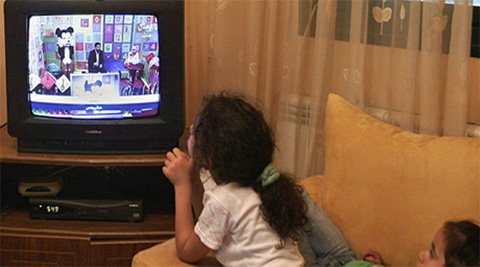PRESENT CONTINUOUS TENSE - (am/is/are + plain verb + ing)
The structure:
I am watching news on TV. (sub + am + plain verb + ing)
(I + am + watch + ing)

He is polishing his shoes. (sub + is + plain verb + ing)
(He + is + polish + ing)

You are reading news paper. (sub + are + plain verb + ing)
(You + are + read + ing)

This is called present progress tense because the action is going on at the time of speaking.
Now we look at the sentences in eight forms:
- I am painting a picture. (positive statement)
- I am not painting a picture. (negative statement)
- Am I painting a picture. (positive question)
- Am I not painting a picture. (negative question)
- I am painting a picture, aren't I? (positive question tag)
- I am not painting a picture, am I? (negative question tag)
- A picture is being painted by me. (passive voice positive)
- A picture is not being painted by me. (passive voice negative.)
- He is practicing the guitar.
- He is not practicing the guitar.
- Is he practicing the guitar?
- Is he not practicing the guitar?
- He is practicing the guitar, isn't he?
- He is not practicing the guitar, is he?
- The guitar is being practiced by him.
- The guitar is not being practiced by him.
Note : We can frame the sentences similarly with the pronouns" he, she and it".
Eg: She is making a cake.
It is kicking the ball. (It perhaps a cat or any animal.)
- We are playing a game.
- We are not playing a game?.
- Are we playing a game?
- Are we not playing a game?
- We are playing a game, aren't we?
- We are not playing a game, are we?
- A game is being played by us.
- A game is not being played by us.
Note: Sentences are similar with the pronouns "we, you and they".
Eg: You are driving a car.
They are watering the plants.
Note: 1) The difference between positive statement and negative statement is usage of "not".
I am painting a picture. (positive)
I am NOT painting a picture. (negative)
2) The difference between statements and questions is change of their placement of
2) The difference between statements and questions is change of their placement of
the 'subject' and 'be' form verb.
I am painting a picture.
Am I painting a picture?.
3) a) The formation of question tag begins from the verb used in the sentence.
3) a) The formation of question tag begins from the verb used in the sentence.
He is practicing the guitar, isn't he?
One exception is that I am painting a picture, aren't I?
But I am not painting a picture,am I? is right as per the rule like other
be form/helping verbs.
b) The tag ends with the subject of the sentence. I am painting a picture, aren't I?
c) Negative tag to the positive statement. Positive tag to the negative statement.
He is practicing the guitar, (positive) isn't he? ( tag negative) is + not =isn't.
He is not practicing the guitar. (negative) is he? (tag positive)
\\\
b) The tag ends with the subject of the sentence. I am painting a picture, aren't I?
c) Negative tag to the positive statement. Positive tag to the negative statement.
He is practicing the guitar, (positive) isn't he? ( tag negative) is + not =isn't.
He is not practicing the guitar. (negative) is he? (tag positive)
Now we take a look at the formation of questions with the "wh" questioning words.
"Wh" questions are what, where, when why, who and how.
They are called the informative questions because the answers to these questions have information.
When some asks a question, What is your aim? the other has to give the answer
which has some information, where as the above mentioned questions are like
"is he practicing the guitar?"are called the yes or no questions and the questions
like "We are playing the game, aren't we? are called the tag questions.
What are you writing? I am writing a novel.
Where is your brother going to? He is going to a grocery shop.
How is your cousin studying? She is studying well.
When are your parents coming ? They are coming next week.
Who is teaching you French? I am learning through many websites.
\\\
Good one...nicely explained...
ReplyDelete